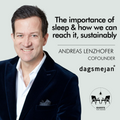French perfumes: from past fragrances to future scents
The sense of smell, and the scents that we enjoy the most are perhaps more closely linked to memories than any of our other senses. Indeed the whiff of freshly baking bread or a specific flower can conjure up vivid memories of a time long passed.Proust, in his ‘Remembrance of all Things Past’, recalls that a bite of a madeleine vividly recalled childhood memories of his aunt giving him the very same cake before going to mass on a Sunday. In this way, smell is also highly emotive. Such memories can, and do, immerse one in the waves of emotions that are brought about with the recollections of when that scent was experienced in the past.
Biologically, scent plays an important role. We are able to tell more about a person by the way that they smell than we are aware of. Specialised scent-receptors in the lining of the nose respond to other people’s scents — without our being aware of the fact — and attract us to those whose genes differ from our own. Dr Tamara Brown, a Croatian geneticist based in Zurich, has been investigating what creates the initial “spark” between two people, and she believes that the answer lies in smell — secret signals we pick up subconsciously.
image by Nathan McBride from Unsplash
perfumes, cross that boundary between the personal and the public
Image by Retha Ferguson from pexels
Smells, and indeed perfumes, cross that boundary between the personal and the public. The personal decision to favor a specific scent is made public when worn - and experienced (for better or worse) by those around us. The perfume industry is built around this connection, with perfumers developing fragrances that seek to convey a vast array of emotions and feelings; from desire to power, vitality to relaxation.
perfume was used to distinguish one’s socio-economic class
Dating back to Egypt, the Roman Empire, Mesopotamia, and the Persian Empire, the use of perfumes is a practice that is thousands of years old. Scents have been used both in daily life for hygiene, as well as ceremonially and as a symbol of nobility. Before taking its place as a staple within the fashion industry, perfume was used to distinguish one’s socio-economic class. Reserved for the upper classes, perfumed products were expensive and hard to come by. The first record of a perfume maker was a woman chemist named “Tapputi,” documented on a clay tablet from Mesopotamia dating back to the second millennium BC. Throughout the ages, different civilizations used fragrances and perfumes in many interesting ways.
Image from fragranceex
If being for the upper classes was not enough, fragrances were of such high importance to the ancient Egyptians that their mythology even notes the god Nefertem as being the lord of perfume. Depicted carrying waterlilies, he alludes to the ancient practices at the time - which used only natural ingredients to derive scents with non-scented oils. The scents that were most popularised were derived from flowers, fruits and aromatic woods. To provide fragrance, incense was also used in ceremonies and ancient rituals, and the trade of myrrh played an important role in Egyptian international relations at the time. Scent was of such high importance to the Egyptian people that even Queens Cleopatra and Hatshepsut were buried with perfumes.
Image from fragranceex
ROYAL SIGNATURE SCENTS
Known as the inventors of non-oil based perfume, the ancient Persians ruled the ancient perfume trade for many years. Persian royalty often had their own “signature scents'' that were exclusively their own. As an example, King Xerxes is often pictured with Lily of the Valley flowers. It is also well-documented that the Persians enjoyed experimenting with fragrances and their distillation processes. This didn’t stop with the mere application of fragrances to one’s body, it spread into other aspects of noble life too - even as a harbinger to announce one’s presence. According to Herodotus when Xerxes wanted to pass through Dardanel strait, his troops "burned various kinds of sweet-smelling materials on the bridge, and branches of myrtle were scattered on it. Then, as the sun rose, Xerxes sprayed wine in water from a golden bowl. Everybody was crowned by means of flowers."
THE FIRST FRAGRANCE INDUSTRY
Photo by William Bout on Unsplash
In Grecco-Roman times, perfumes assisted Rome’s transformation from a small farming village to a global epicenter. The ancient cult of Aphrodite, goddess of love, used perfumes and scents in their temples and in their worship services. However, perfume was not reserved solely for religious and spiritual purposes. Romans were estimated to use about 2,800 tons of imported frankincense and 550 tons of myrrh a year. These fragrances were used in their public bathhouses to scent the water, and in body care items such as balms, oils and perfumes for skin and hair. Indeed, the oldest perfume found, dubbed Eau du BC, was discovered in Cyprus. The scents were discovered inside what archaeologists believe was an enormous 43,000 sq ft perfume-making factory. "We were astonished at how big the place was," said Maria Rosa Belgiorno, the leader of the Italian archaeological team. "Perfumes must have been produced on an industrial scale." At least 60 distilling stills, mixing bowls, funnels and perfume bottles were found perfectly preserved at the site, which had been blanketed in the earth after a violent earthquake around 1850 BC. The perfumes were scented with extracts of lavender, bay, rosemary, pine or coriander and kept in tiny translucent alabaster bottles.
A SENSORY EXPERIENCE
The ancient Chinese also indulged in fragrances. Not limited to one aspect of life, the Chinese infused many daily items with perfume - such as the ink they wrote with and the stationary they wrote on, making the writing experience even more of a sensory experience. They also used perfume in particular spaces such as homes - believing that certain scents had cleansing properties and could be used to aid with disinfection and purification. Oriental fragrances focused heavily on herbs and spices, many of which were also used for food and medicine.
Image by Daria Shevtsova from Pexels
The Crusaders brought fragrance making materials and techniques back to Europe around the 11th century A.D. With materials acquired in the far and middle eastern regions, they also brought along with them the techniques needed to produce more fragrances, such as those for distilling rose petals. During the bubonic plague, doctors would wear bird-like masks filled with herbs, spices and oils to ward off the sickness. The belief that scented oils and fragrant materials could eliminate the “stench of pestilence” helped grow the popularity of fragrance use in medieval Europe.
the godfather of fragrance
Italians had almost perfected the perfume-making process and liquid perfumes began to replace solid ones by the 14th century A.D. Marco Polo brought many unique aromatics back from his travels, which turned Venice into a major fragrance trading post. Catherine de Medici, a wealthy Italian who married the French king in 1519, is often credited with bringing perfume to the rest of Europe. Her Italian perfumer, Rene le Florentin - known as “the godfather of fragrance” - created a signature scent for her out of orange blossom and bergamot. Other nobles such as Elizabeth of Hungary helped spread perfume’s popularity across Europe.
Images by Evie Shaffe from Pexels
goat's milk, rose petals & NITROBENZENE
Photo by Juliana Arruda on Unsplash
France's King Louis XIV favored the use of scent so much so that he became known as the "perfume king." Within his court was a floral pavilion filled with fragrances, with dried flowers placed in bowls throughout the palace to freshen the air. His royal dignitaries bathed in goat's milk and rose petals, while visitors were doused with perfume, which was also sprayed on clothing, furniture, walls, and tableware. It was at this time that Grasse, a region of southern France where many flowering plant varieties grow, became a leading producer of perfumes.
In England, aromatics would be contained in lockets and the hollow heads of canes to be sniffed by the owner. It was not until the late 1800s that perfumes could take to the mass-market, with the aid of the use of synthetic chemicals. The first synthetic perfume was nitrobenzene, made from nitric acid and benzene. This synthetic mixture gave off an almond smell and was used to add scent to soaps. In 1868, Englishman William Perkin synthesized coumarin from the South American tonka bean to create a fragrance that smelled like freshly mown hay. Ferdinand Tiemann of the University of Berlin created synthetic violet and vanilla. In the United States, Francis Despard Dodge created citronellol—an alcohol with a rose-like odor—by experimenting with citronella, which is derived from citronella oil and has a lemon-like odor. In different variations, this synthetic compound gives off the scents of sweet pea, lily of the valley, narcissus, and hyacinth.
Photo by Mila Young on Unsplash
And if one ever looks for that certain je ne sais quoi that crosses the line of the public appearance with the boundaries shrouded by privacy, perfume is it. Fragrance may be personal, but it’s also what makes up a significant part of culture. In the words of Vogue’s Catherine Piercy, she reminds us that a stroll through the City of Light confirms that the art of perfume is still alive and well. Sprinkled with the innovation of new niche boutiques, the storied houses include it all - from Guerlain to Annick Goutal nestled behind every glorious Haussmannian corner.
In this way, perfume started to become a fashion accessory.
European men and women would wear perfume on their bodies, clothing and wigs. People began incorporating more complex ingredients such as ambergris, civet and musk derived from animals. Whilst bathing regularly was not yet a popular practice, scents were used to cover up one’s adverse BO. The smell of perfume was in vogue because it helped to distinguish the upper classes.
perfume forms part of the insatiable ingredients of la Parisienne
Photo by Jess Bailey on Unsplash
And if one ever looks for that certain je ne sais quoi that crosses the line of the public appearance with the boundaries shrouded by privacy, perfume is it. Fragrance may be personal, but it’s also what makes up a significant part of culture. In the words of Vogue’s Catherine Piercy, she reminds us that a stroll through the City of Light confirms that the art of perfume is still alive and well. Sprinkled with the innovation of new niche boutiques, the storied houses include it all - from Guerlain to Annick Goutal nestled behind every glorious Haussmannian corner.
Indeed, perfume forms part of the insatiable ingredients of la Parisienne - good skin, great hair, and an excess of insouciant charm. And while much is said about her rumpled, lived-in shag of hair, how she picks her quirky yet classic outfits or what her beauty secrets are, not much is said about her scent. Among the most classic options is the iconic Chanel No. 5 (1921). Made almost a century ago, it has stood the test of time. Bringing to mind Marilyn Monroe, who wore it, with the House of Chanel - it is the ultimate iconic fragrance of femininity. Guerlain Shalimar (1925), another of the true icons is found wafting through theaters, and at the opera - it is very French. Not to mention that it is a statement bottle, and quite distinguished.
THE SUBTLE SMELL OF SPACE
Yet more recently, there has been a shift into the adventure of fragrance, as NASA is bottling the scent of space in an Eau de Space kickstarter campaign. The history of the "Smell of Space" has been clouded behind various accounts of existence. Ever since the first spacewalk, astronauts were shocked by the lingering odor when returning back into the spacecraft. Some describe it as gunpowder, rum, fruit, seared steak, or a BBQ. The first space tourists also noted a pungent aroma once the hatch opened, 'like burnt cookies'. Indeed, decades ago, NASA asked specialists, including Steve Pearce, to develop the "smell of space" to help train astronauts before launch into orbit. NASA's goal of simulating space as closely as possible during training is to eliminate any surprises astronauts might experience as they venture past the atmosphere of the Earth. Partnering with award-winning perfumers, this initiative is not only just about creating a perfume.
Image from Uncrate
The Eau de Space team plans to implement a “take-back life cycle” allowing the reuse and sanitization of unused products, which would be donated to K-12 educational programs around the world. As the product is made in the United Kingdom, it aims to utilize living-wage labor and environmentally friendly practices including zero manufacturing waste. In addition to this, backers will be supporting the project’s K-12 STEM programs through experiential education and their "Buy One, Give One" business model, which aims to inspire future astronauts by supplying them with a whiff of space itself. As an homage to the year humans first landed on the moon, the Eau de Space Kickstarter has an initial goal of $1,969. This has far been surpassed, and currently sits at over $550,000.
Abstract scents are nothing new. There are candles that are said to smell like your home state, limited-edition Burger King perfume, and a cologne for “walking with Christ.” Even alcohol-free fragrances are becoming more and more popular. Whatever your preferences within the realm of smells, there is something for you. When selecting a fragrance or signature scent, it is good to remember that much of our emotional response to smell is governed by association.
The subjectivity of how this realm will be received is not something that the wearer can discern. What could be your favoured scent could indeed repel someone else with a different taste. Similar to one’s preferred palette in wine-tasting, the notes may be identifiable, but one’s individual favourite would differ from person to person. Indeed conjuring up a fragrance cocktail is something that Laurice Rahme, founder and CEO of fragrance house Bond No. 9, recommends doing. “The top note is what you smell right away when you spray it [and usually consists of] the sparkling and vivacious fresh notes,” Rahme says. “The middle note is the heart of the fragrance and is usually warmer and softer. And finally, the bottom note is what develops last and what stays with you for hours—long after the top notes have disappeared.”
With an awareness of what each of these notes could be, one is able to create a custom scent that encapsulates one’s own personality. Having a general awareness of this process, and bringing it together with the help of a personal perfume creator, can turn your signature scent into something iconic. As Rhame reflects, “Very early in my career, Robert Salmon at L’Oreal told me two things that have been most important. First, always focus on creativity – all the rest will follow. Second, not to be afraid to be different. He always reminded me that it is important to be myself, not to follow, and not to look at what others are doing, but to find the path that is right for me.” In this way, forging ahead on your own path becomes an embodiment, that leaves those around you with a lingering smell of the memory of their experience of you.







